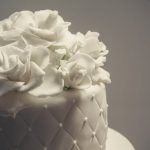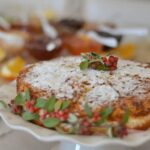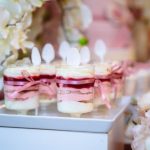What is sugar paste for cake decorating? Sugar paste, also known as fondant, is a versatile and pliable icing that is commonly used to cover cakes and create decorative elements. In this article, we will delve into the world of sugar paste, exploring its origins, ingredients, advantages, techniques for working with it, common mistakes to avoid, and creative ideas for using it in cake decorating.
Sugar paste has a rich history in the world of cake decorating, with origins that can be traced back centuries. This unique and malleable medium has been used by bakers and confectioners to create beautifully adorned cakes for special occasions and celebrations.
When making sugar paste for cake decorating, the quality of the ingredients used plays a significant role in the final product. Understanding the key components and the process of making sugar paste is essential for achieving successful results in cake decorating. From its texture to its taste, every detail matters when it comes to creating the perfect sugar paste for your cakes.
The Origins and History of Sugar Paste in Cake Decorating
Sugar paste, also known as fondant, has a long and rich history in the world of cake decorating. Its origins can be traced back to ancient civilizations such as the Egyptians and the Romans, who used a similar substance made from honey and sugar to create decorative designs on their baked goods.
In medieval Europe, sugar paste was primarily used to create intricate decorations for royal and aristocratic households. It was a symbol of wealth and prosperity, as sugar was an expensive commodity at the time. The use of sugar paste in cake decorating became more widespread during the Renaissance period, as trade routes opened up and sugar became more accessible to the general population.
The modern concept of sugar paste for cake decorating really took off in the 20th century with the invention of new techniques and tools for working with this versatile medium. Today, it is a staple in cake decorating around the world, with professional bakers and hobbyists alike using it to create stunning edible works of art.
| Country | Year |
|---|---|
| Egypt | Ancient times |
| Rome | Ancient times |
| Europe | Medieval period |
The Ingredients and Making of Sugar Paste
Sugar paste, also known as fondant, is a versatile and popular option for cake decorating. But what exactly is sugar paste for cake decorating? This section will delve into the ingredients and the process of making sugar paste, providing a better understanding of this essential element in the world of cake decoration.
The main ingredients in sugar paste include confectioner’s sugar, gelatin or agar-agar, glycerin, and water. The process of making sugar paste involves melting the gelatin and glycerin together before adding them to the sifted confectioner’s sugar. Once mixed, it is kneaded until smooth and pliable. Many bakers and decorators also add flavorings or colors at this stage to customize the sugar paste to their liking.
The key to making quality sugar paste lies in getting the right consistency. It should be firm enough that it holds its shape when molded but still pliable enough for easy manipulation. With practice and attention to detail in measuring and mixing the ingredients, anyone can learn how to make their own sugar paste for cake decorating.
Advantages of Using Sugar Paste for Cake Decorating
Sugar paste, also known as fondant, is a versatile and popular choice for cake decorating. It offers a smooth and elegant finish to cakes, making it a favorite among professional bakers and home decorators alike. So, what is sugar paste for cake decorating and why should you consider using it? Let’s explore some of the advantages of using sugar paste for cake decorating:
Advantages of Using Sugar Paste:
1. Versatility: Sugar paste can be shaped, molded, and colored in various ways, making it a great option for creating intricate designs and decorations for cakes. Whether you want to create realistic flowers, elegant borders, or fun figurines, sugar paste allows for endless creativity.
2. Smooth Finish: One of the main advantages of using sugar paste is the ability to achieve a smooth and flawless finish on your cakes. Unlike buttercream icing, which can be more challenging to smooth out, sugar paste provides a clean canvas for decorating.
3. Longevity: Cakes decorated with sugar paste have a longer shelf life compared to those with buttercream or whipped cream frosting. The sugar paste creates a protective barrier that helps preserve the freshness of the cake while maintaining its decorative elements.
In addition to these advantages, sugar paste also offers excellent coverage for covering imperfections on cakes and provides a firm base for adding additional decorations such as piping or edible paints.
Whether you’re an experienced baker or just starting out with cake decorating, incorporating sugar paste into your repertoire can take your creations to the next level.
Different Techniques for Working With Sugar Paste
Working with sugar paste for cake decorating allows for a wide range of techniques to create beautiful and intricate designs on cakes. Whether you are a beginner or an experienced baker, there are various ways to work with sugar paste to elevate your cake decorations.
Rolling and Cutting
One of the most common techniques for working with sugar paste is rolling it out and cutting out shapes to decorate cakes. Using a rolling pin, roll out the sugar paste to the desired thickness, then use cookie cutters or specialized shaping tools to create flowers, leaves, or other decorative elements. This technique allows for precise and uniform shapes that can be easily arranged on the cake.
Molding and Sculpting
Another popular technique is molding and sculpting the sugar paste into three-dimensional shapes. This method requires more advanced skills but can result in stunning edible sculptures such as figurines, animals, or intricate designs. With practice and patience, you can achieve highly detailed and elaborate decorations using this technique.
Embossing and Texturing
Embossing and texturing the sugar paste is another way to add depth and dimension to cake decorations. You can use embossing mats, textured rolling pins, or even handmade molds to create patterns and textures on the surface of the sugar paste. This technique adds visual interest to your cakes and allows for endless creative possibilities.
By experimenting with these different techniques for working with sugar paste, you can take your cake decorating skills to the next level. Whether you prefer simple cut-out designs or elaborate sculpted creations, there are numerous ways to utilize sugar paste to bring your cake decorating visions to life.
Common Mistakes to Avoid When Using Sugar Paste
Mistakes can happen when working with sugar paste for cake decorating, but most of these mishaps can be easily avoided with the right knowledge and techniques. Here are some common mistakes to avoid when using sugar paste:
Using Too Much or Too Little Sugar Paste
One of the most common mistakes when working with sugar paste is using the wrong amount. Using too much sugar paste can make it difficult to work with and can result in a thick, lumpy finish on your cake. On the other hand, using too little sugar paste may not fully cover your cake, leaving gaps and imperfections.
Not Kneading the Sugar Paste Properly
Kneading the sugar paste is an essential step to ensure that it becomes smooth, pliable, and easy to work with. Not kneading the sugar paste enough can result in a rough and uneven texture, making it challenging to roll out and apply to the cake.
Overworking or Underworking the Sugar Paste
Another mistake to avoid is overworking or underworking the sugar paste. Overworking can cause the sugar paste to become warm and sticky, while underworking can result in cracks and tears when applying it to the cake.
By being mindful of these common mistakes and taking steps to avoid them, you can create beautifully decorated cakes with sugar paste that look polished and professional. Remember that practice makes perfect, so don’t get discouraged if things don’t go perfectly on your first try – keep experimenting with different techniques and refining your skills.
Creative Ideas and Inspiration for Using Sugar Paste in Cake Decorating
When it comes to cake decorating, sugar paste offers endless opportunities for creativity and inspiration. Whether you’re a professional baker or a home baker looking to elevate your skills, there are countless ways to use sugar paste to decorate stunning and unique cakes. Here are some creative ideas and inspiration for using sugar paste in cake decorating:
- 3D Sculpting: One of the most impressive ways to use sugar paste is to sculpt three-dimensional shapes and figurines. From realistic flowers to adorable animals, the possibilities are truly endless. With the right techniques and tools, you can bring any design to life with sugar paste.
- Texture and Detailing: Sugar paste can be used to add intricate textures and details to cakes. Whether you want a rustic, wood-like finish or delicate lace patterns, sugar paste can be molded and shaped into any design you desire.
- Mixed Media: Get creative by combining sugar paste with other decorative elements such as edible paints, edible glitters, or even wafer paper. By experimenting with different mediums, you can create truly unique and eye-catching cake designs.
In addition to these ideas, it’s important to consider the theme or occasion for which the cake is being made. For example, for a children’s birthday party, creating whimsical cartoon characters or colorful shapes out of sugar paste can make the cake extra special. On the other hand, for a wedding or anniversary cake, intricately crafted floral designs made from sugar paste can add an elegant touch.
Overall, working with sugar paste opens up a world of creative possibilities in cake decorating. With some practice and imagination, you can use this versatile medium to bring any cake design idea to life.
Conclusion
In conclusion, sugar paste has proven to be an incredibly versatile and beautiful medium for cake decorating. Its origins date back centuries, and it has been perfected over time to become a staple in the baking world.
The ingredients used to make sugar paste are simple, yet the possibilities for creativity are endless. From simple techniques like rolling and cutting to more advanced methods like shaping and molding, sugar paste lends itself well to a wide range of designs and styles.
One of the major advantages of using sugar paste is its ability to add a flawless and smooth finish to cakes. This makes it perfect for creating intricate details and decorations on cakes for special occasions.
Additionally, the flexibility of sugar paste allows for various textures, patterns, and colors to be incorporated into cake designs. By avoiding common mistakes such as using too much or too little water, or not kneading the paste properly, decorators can achieve professional-looking results with sugar paste.
For those seeking creative inspiration in working with sugar paste, there are countless ideas and techniques to explore. Whether it’s crafting lifelike flowers, whimsical figurines, or elegant drapery effects, the possibilities are truly endless when it comes to using sugar paste in cake decorating.
It is evident that sugar paste has become an indispensable tool in the world of cake decoration, offering decorators the opportunity to bring their unique visions to life with ease and precision while adding a touch of elegance to any baked creation.
Frequently Asked Questions
What Is the Difference Between Fondant and Sugar Paste?
Fondant and sugar paste are often used interchangeably in cake decorating, but there is a difference between the two. Fondant tends to be softer and more pliable, making it easier to cover cakes smoothly, while sugar paste is firmer and holds its shape better for creating intricate decorations.
What Is Cake Sugar Paste?
Cake sugar paste, also known as gum paste, is a versatile decorating medium made from powdered sugar, gelatin, water, and sometimes tylose powder or gum tragacanth. It dries hard and can be molded into various shapes like flowers, figures, or other ornate designs.
How Do You Stick Sugar Paste Decorations to a Cake?
To stick sugar paste decorations to a cake, you can use royal icing or edible glue made from water mixed with a little Tylose powder. Simply brush the back of the decoration with the adhesive and gently press it onto the cake. It’s important to let the decoration set before handling the cake to avoid any breakage.

Welcome to my blog about home and family. This blog is a place where I will share my thoughts, ideas, and experiences related to these important topics. I am a stay-at-home mom with two young children. I hope you enjoy reading it! and may find some helpful tips and ideas that will make your home and family life even better!





